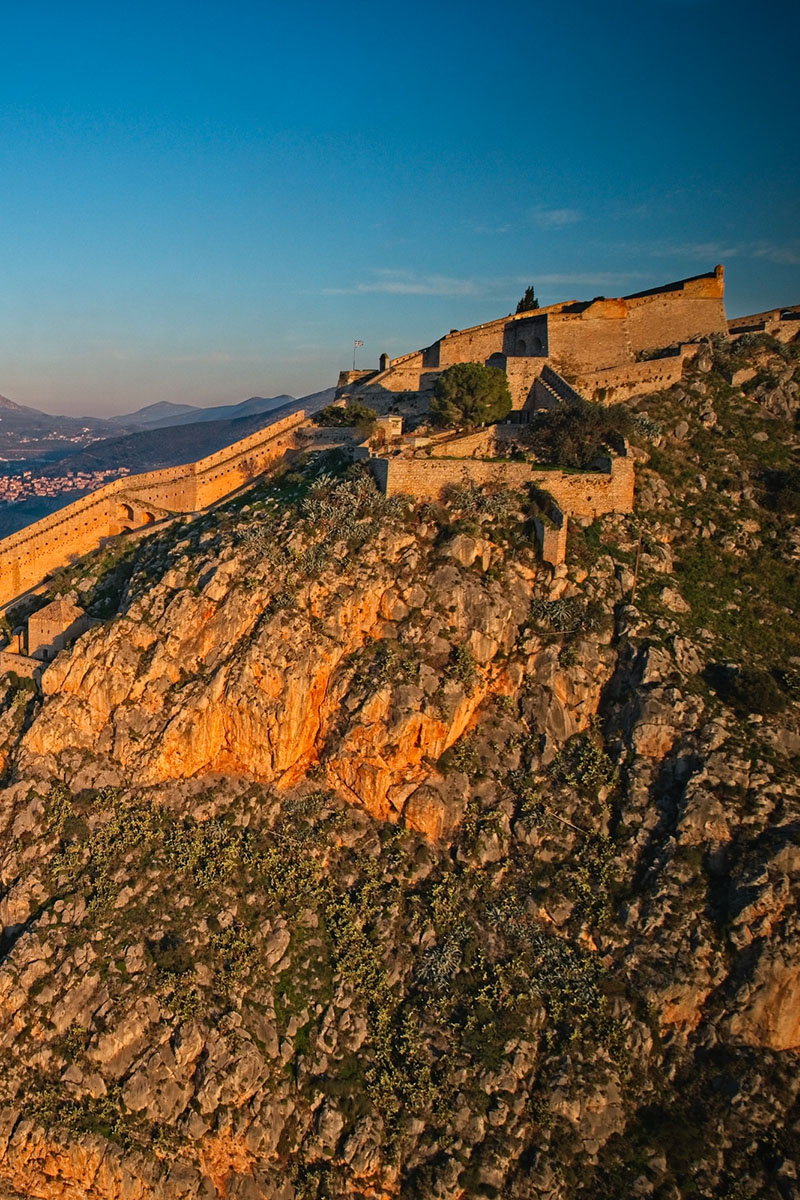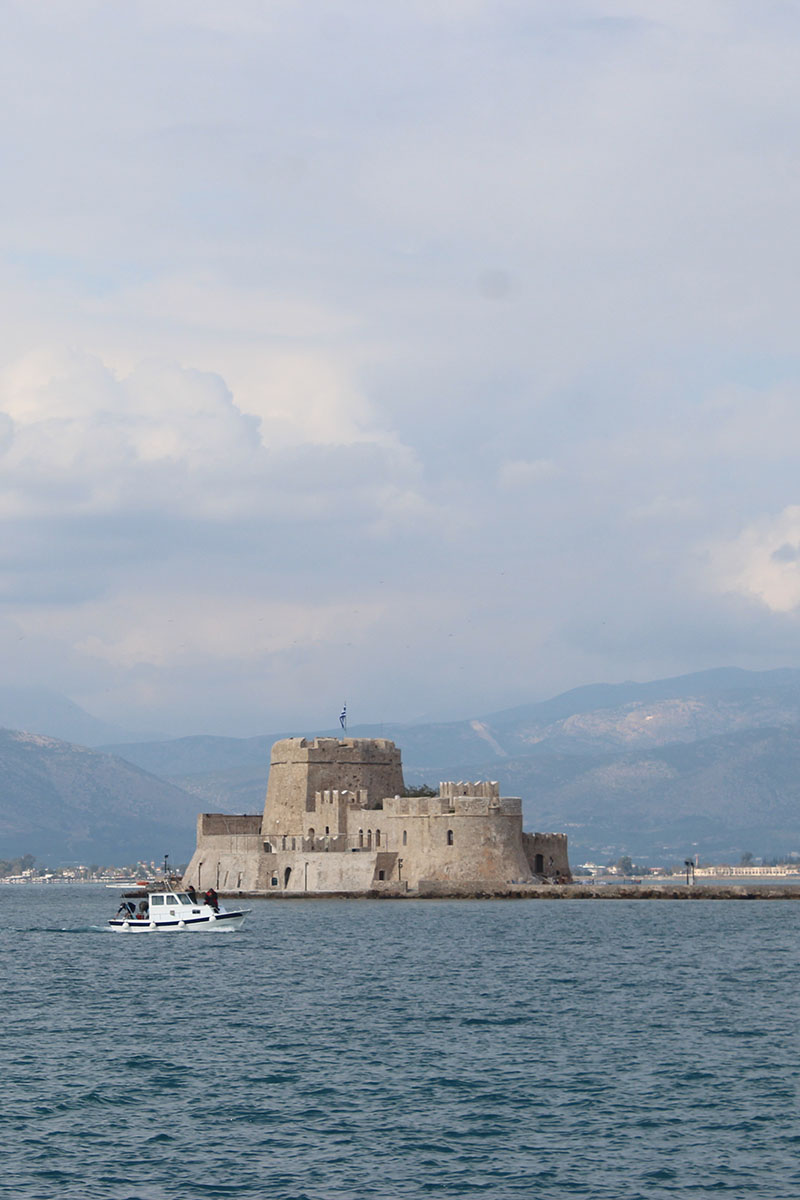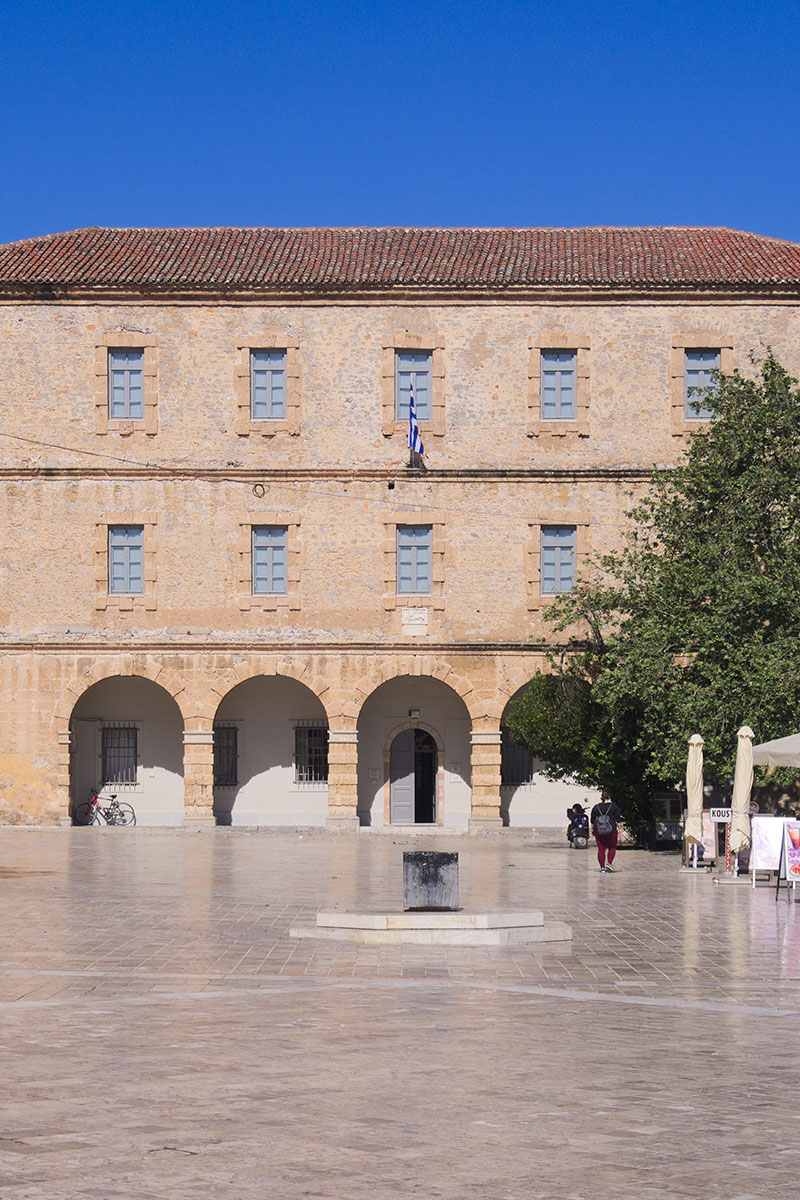Nafplio
Nafplio or Nauplio (Greek: Ναύπλιο) is a coastal city located in the Peloponnese in Greece and it is the capital of the regional unit of Argolis and an important touristic destination. Founded in antiquity, the city became an important seaport in the Middle Ages during the Frankokratia as part of the lordship of Argos and Nauplia, held initially by the de la Roche following the Fourth Crusade before coming under the Republic of Venice and, lastly, the Ottoman Empire. The city was the second capital of the First Hellenic Republic and of the Kingdom of Greece, from 1827 until 1834.

Palamidi
The fort of the Palamidi, which has been preserved in excellent condition, is one of the greatest achievements of Venetian fortification architecture. The hill of Palamidi, which takes its name from the Homeric hero Palamidis, does not seem to have been systematically fortified until the second Venetian occupation. The construction of the fort was basically carried out during the time of Venetian General Superintendent of the Fleet, Agostino Sagredo, from 1711 to 1714, marking the fort not only as a major feat in terms of its fortifications, but also in terms of the speed with which it was constructed.

Bourtzi
The fort on the sea, which has remained known by its Turkish name ‘Bourtzi’, meaning tower, has become Nauplion’s trademark. On this small island, which is in the middle of the city’s harbour, there was once a Byzantine church consecrated to Aghios Theodoros. The Venetians, having understood the strategic importance of this site for the protection of the port, built a tower on the rock in 1473. The Italian architect, Antonio Gambello, who had undertaken the building of the Castello di Toro, designed the fort, which was then completed by the engineer Brancaleone.

Archaeological Museum
The Archaeological Museum is accommodated in the imposing in size as well as strict in symmetry, stone-built Venetian structure which covers and encases the central, Syntagma Square on its west side. It was first built in 1713, during the second reign of the Venetians, under the Naval Proveditore Augustine Sagredo to be used as the navy’s depository, according to the marble inscription fitted on the building’s frontage, written in Latin. It is widely acknowledged as one of the best well-preserved Venetian structures in the whole of Greece.



